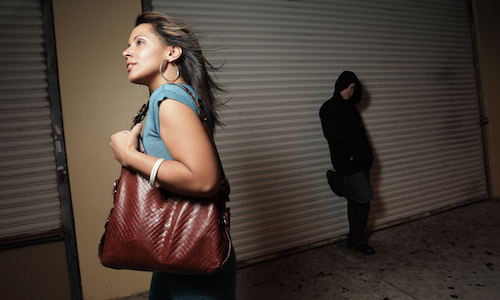A new study from NAR shows more than 50 percent of brokerages are failing their agents in terms of providing proactive safety procedures.
On Sept. 31, 2014, after an exhaustive search, Little Rock, Ark. police found the body of Beverly Carter, 49. She was a real estate agent, and her body had been dumped in a shallow grave behind a concrete mixing plant. When asked why Carter had been targeted, Aaron Lewis, the man charged with her murder, replied simply: “She was just a woman that worked alone – a rich broker.”
Three years earlier, the body of 27-year-old real estate agent Ashley Okland was found in a model home, shot. One year before that, police in Youngstown, Ohio discovered Vivian Martin, 67, strangled in a house where she was scheduled to meet a pair of potential buyers.
Since 2008, more than a hundred real estate professionals have been killed on the job. It’s a dangerous occupation. And yet, according to a recent survey from the National Association of Realtors, regardless of these daunting figures, less than 50 percent of Realtors say their brokerage has proactive procedures for safety in place.
Of the more than 2,800 survey respondents, 46 percent of real estate professionals said their brokerage had installed systems to help employees avoid and handle potentially dangerous on-the-job situations; 27 percent said their brokerage didn’t offer any assistance; and 27 percent claimed if their brokerage did, they were unaware of them.
The Reality of Fear
The realities that real estate professional face in their line of work are ever-present, considering the situations agents are often asked to face. No partner, no back up, meeting a stranger in a potentially secluded area – while it seems an everyday scenario, it’s one rife with danger.
Forty percent of survey respondents said they’ve experienced a situation that made them fear for their personal safety or the safety of their personal information – which, while less life threatening, can be similarly detrimental – with 48 percent of those being women (compared to 25 percent men), and 42 percent who were working in suburban areas (compared to 40 percent in urban areas). When asked what situations caused fear, Realtors cited: open houses; vacant or model homes; properties that were unlocked or unsecured; and properties in remote areas.
Though most respondents (96 percent) admitted they had never been victim to a crime, that still leaves 4 percent who had. Broken down: 2 percent said they were victim of a robbery, 1 percent an assault and 1 percent identity theft. Considering NAR has a membership of roughly 1.1 million, an estimated 40,000 have been victim to a crime, which is why proactive safety procedures are so crucial.
Expect the Best, Plan for the Worst
Acknowledging the inherent dangers associated with meeting strangers, several real estate professionals have taken a conscious step in arming themselves, whether that be with knowhow or weaponry.
According to NAR’s survey results, 17 percent of Realtors are packing pepper spray, 4 percent a Taser, 3 percent a baton or club, and 12 percent – an estimated 120,000-plus Realtors – are arming themselves with actual firearms, which may be putting Realtors in more danger than they realize.
According to a 2009 study from the University of Pennsylvania, carrying a gun may increase a person’s risk of getting shot and killed. In an analysis of 677 shootings, the research team, lead by Charles Branas, a professor of epidemiology at the university, discovered that people who carried guns were 4.5 times as likely to be shot and 4.2 times as likely to get killed compared with unarmed citizens.
In the study, Branas said that while the results may simply reflect a personality link between carrying a gun getting shot, he went on to speculate that it may rather be that guns give people a sense of empowerment that causes carriers to overreact in tense situations.
But not every real estate professional is wont to fight fire with fire; some are content to take less violent precautionary measures, NAR reported.
- Thirty-eight percent of members have participated in a self-defense class.
- Eighteen percent have participated in a Realtor safety course.
- And the typical NAR member meets 50 percent of their prospective buyers that they do not know in a real estate office or a neutral location before first viewing a home.
Even with little spare time, many agents find ways to reinforce their safety by notifying a friend or spouse before showing a house, and 13 percent use easy-to-download mobile apps as an extra precaution. Among the favorites were:
- Life 360, which allows users to quickly view the locations of everyone in their “private circle.”
- bSafe, which provides users an easy-use SOS alarm button to immediately notify your bSafe friends of an emergency.
- Guardly, which act as personal emergency phones that provide instant two-way communication with private security and authorities.
Real estate isn’t a warzone, or a raging fire, but the dangers associated with the day-to-day operations are no less real, which is why NAR urges agents and brokerages to install proactive procedures to prepare professionals for risky situations that many have already faced in the field.
